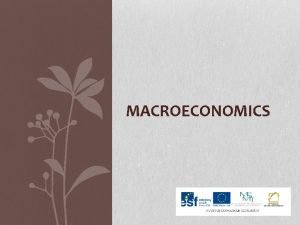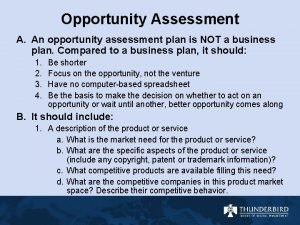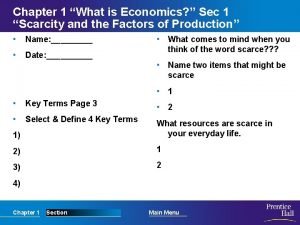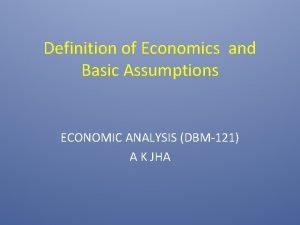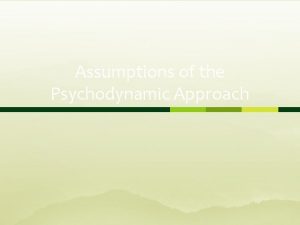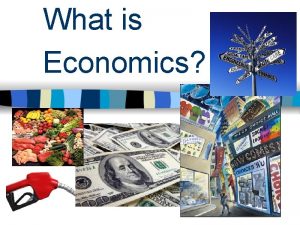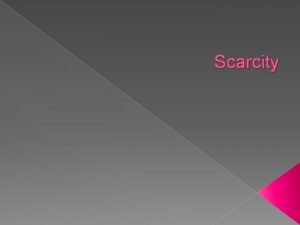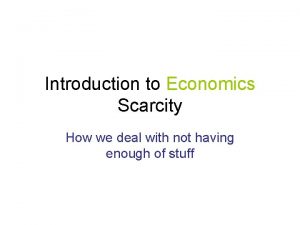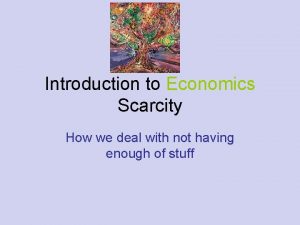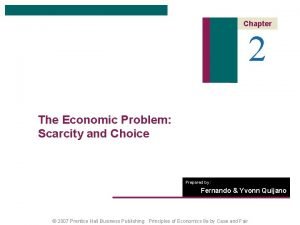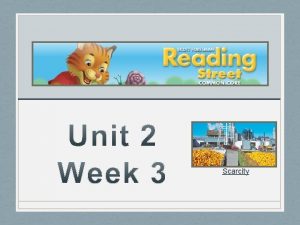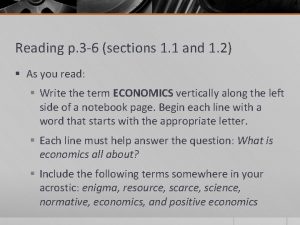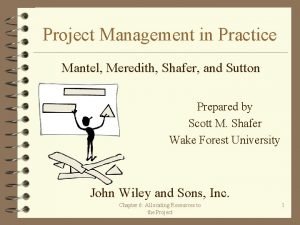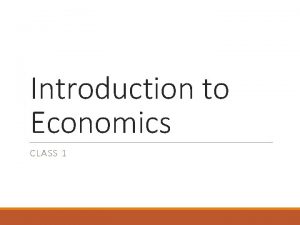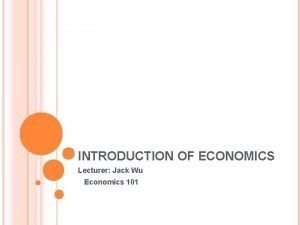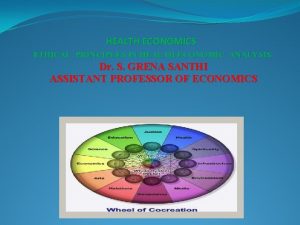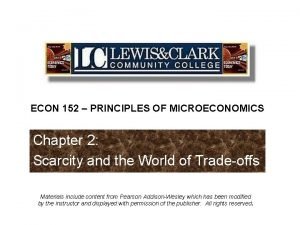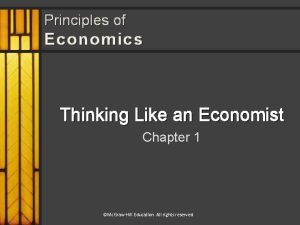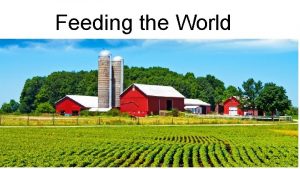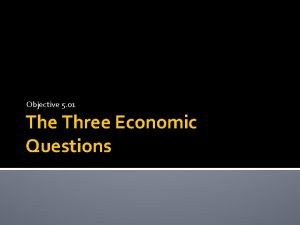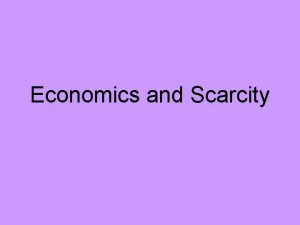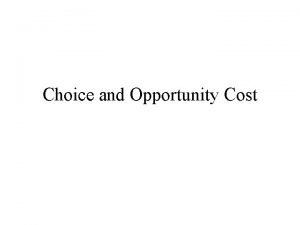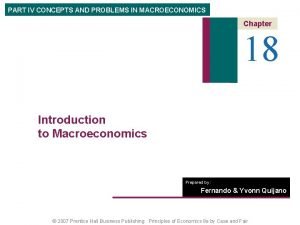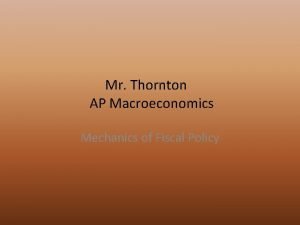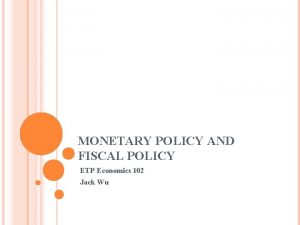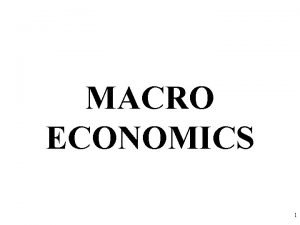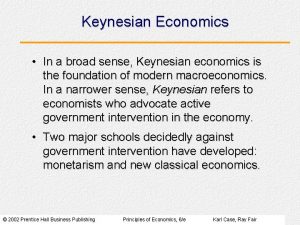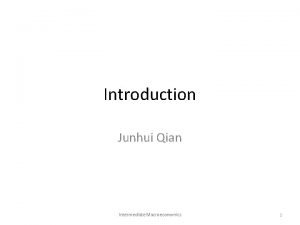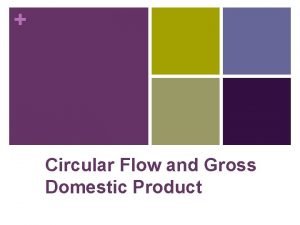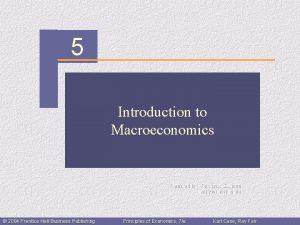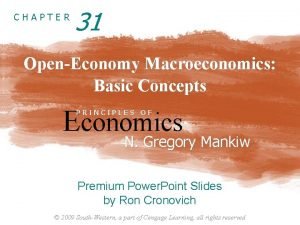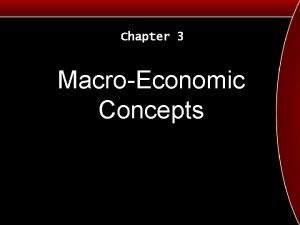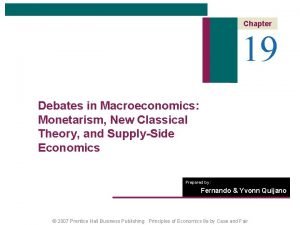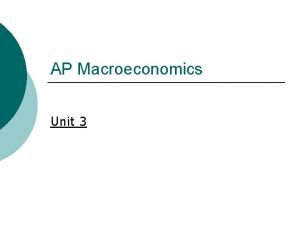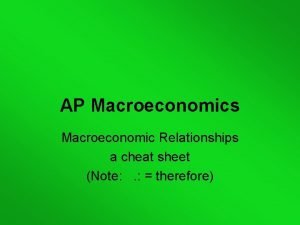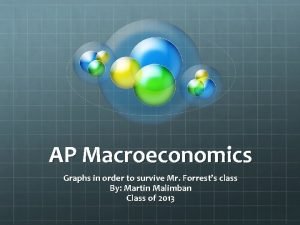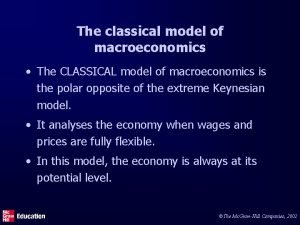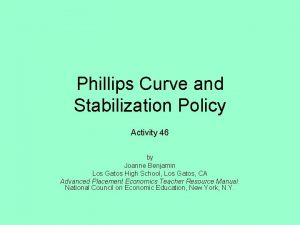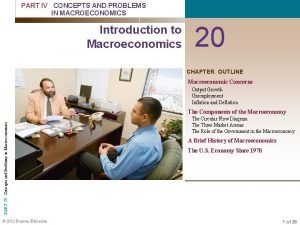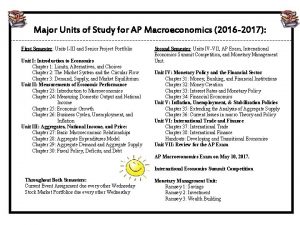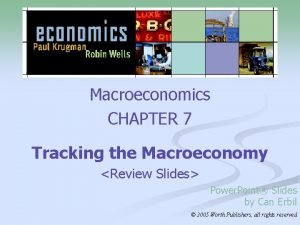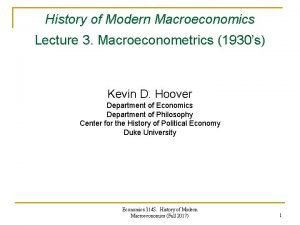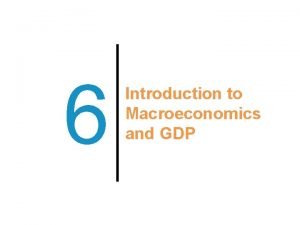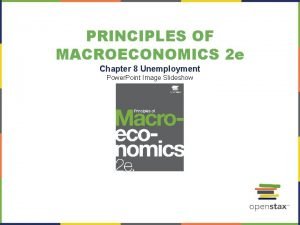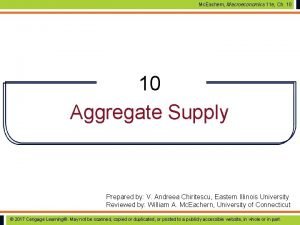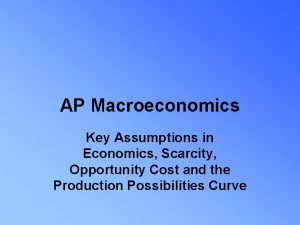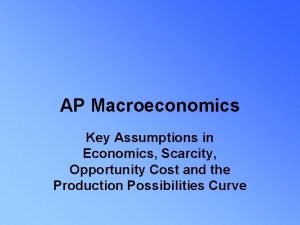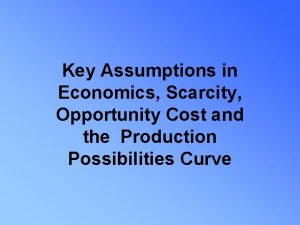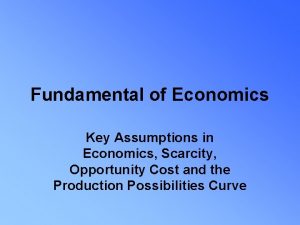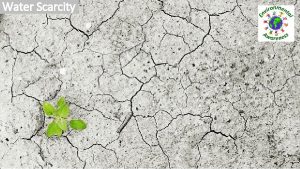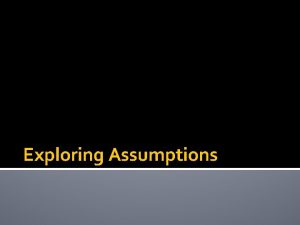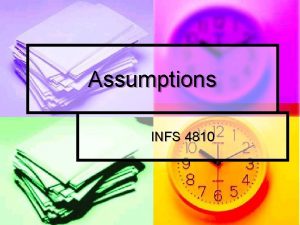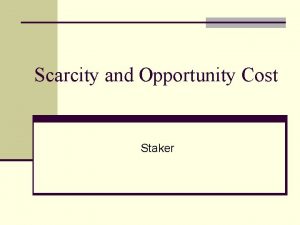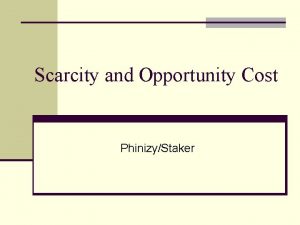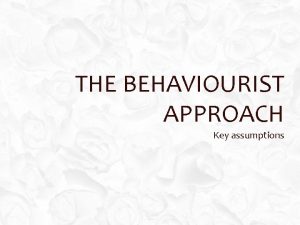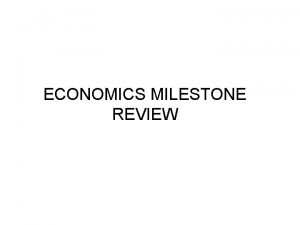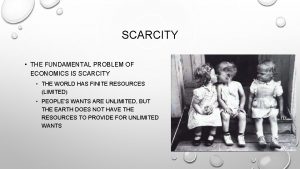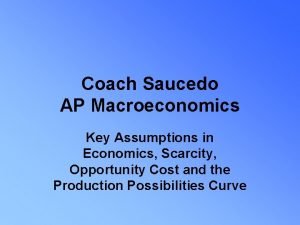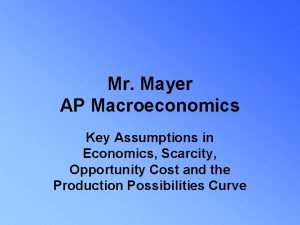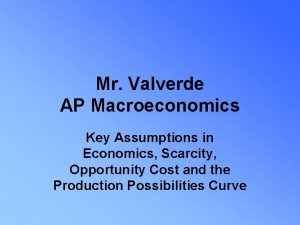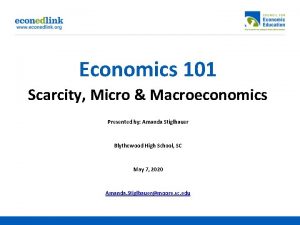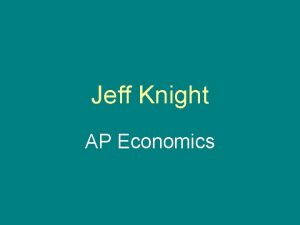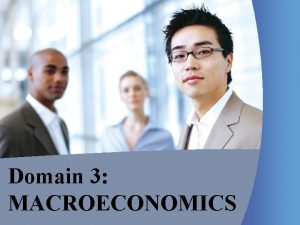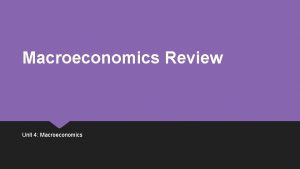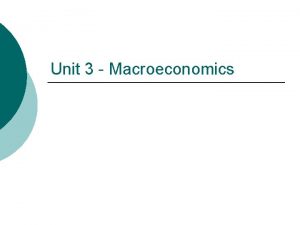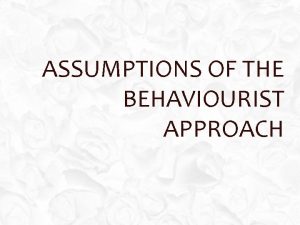AP Macroeconomics Key Assumptions in Economics Scarcity Opportunity




































































- Slides: 68

AP Macroeconomics Key Assumptions in Economics, Scarcity, Opportunity Cost and the Production Possibilities Curve

Key Assumptions in Economics • People are rationally self-interested – They seek to maximize their utility (happy points) • People generally make decisions at the margin – They weigh the marginal benefit against the marginal cost of a decision • Ceteris Paribus – Economists hold factors constant, except for what’s being considered

Marginal Analysis • Most decisions are made based upon a change in the status quo. • Example: You have one cup of coffee (the status quo) and are deciding whether to have another.

Marginal Analysis • You have studied five hours for an economics exam (the status quo) and need to decide if it is in your best interest to study another hour.

Marginal Analysis • These decisions are said to be made at the margin. The next cup of coffee brings with it additional (or marginal) benefits to the consumer, but comes at additional (marginal) costs. • The rational consumer weighs the additional benefits against the additional costs.

Marginal Analysis • Marginal Cost (MC): The additional cost incurred from the consumption of the next unit of a good or service. • Marginal Benefit (MB): The additional benefit received from the consumption of the next unit of a good or service.

Example

Marginal Analysis Rules • Do something if the marginal benefits are greater than the marginal costs of doing it. • Stop doing something when the marginal benefits equal marginal costs of doing it • Never do anything when the marginal benefits are less than marginal costs.

Basic Economic Vocabulary • Economics – The study of choices people make to satisfy their needs and wants • Microeconomics – The study of how individuals and firms deal with scarcity • Macroeconomics – The study of how society as a whole deals with scarcity

Basic Economic Vocabulary • Needs – Necessities for survival • Wants – Goods and services consumed beyond what is necessary for survival

Basic Economic Vocabulary • Goods – Physical objects that can be purchased • Services – Actions or activities performed for a fee • Consumers – People who purchase goods and services • Producers – People who supply goods and services

• Resources a. k. a. The Factors of Production Economists classify resources into 4 categories 1. Land • • Natural resources The payment for Land is RENT 2. Labor • • Human resources The payment for Labor is WAGES 3. Capital (a product of Investment) • • Tools, machines, factories The payment for Capital is INTEREST 4. Entrepreneurship • • The special ability of risk-takers to combine land, labor and capital in new ways in order to make profit The payment for Entrepreneurship is PROFIT

The Fundamental Problem of Economics: Scarcity • People have unlimited wants but the resources to satisfy those wants are scarce. • Therefore, we must make choices about how to use our scarce resources. We face tradeoffs when it comes to using available resources. – Ex. Assume flour is a scarce resource: 3 cups of flour can be used to make a loaf of bread or a cake, but the 3 cups cannot be used to make both.

The Fundamental Problem of Economics: Scarcity OR

Trade-offs • The fact that we are faced with scarce resources implies that individuals, firms, and governments are constantly faced with trade-offs.

Trade-Offs • Individual: Rent or buy a home, employment and education choices. • Firms: Which goods to produce, restaurant staying open late on a Saturday night.

Opportunity Cost • The value of what was given up in the following examples is called opportunity cost.

Opportunity Cost • Once a resource or factor of production has been put to productive use an opportunity cost is incurred. • Opportunity cost is the next best alternative use for a resource. – Ex. If the 3 cups of flour are used to bake bread, then the opportunity cost is the cake that could also have been baked with the 3 cups of flour. • No matter what we do with our time or resources, we always incur opportunity cost. TINSTAAFL.

Opportunity Cost • Example: You have one scarce hour to spend between studying for an exam, working at a coffee shop for $8 per hour, or mowing your uncle’s lawn for $10 per hour. • If you choose to study what is the opportunity cost?

Opportunity Cost • A common mistake is to add up the value of all your other options. • By choosing to study, you really only give up one activity, not both.

Opportunity Cost • The opportunity cost of using your resource to do activity X is the value the resource would have in its next best alternative use. • Therefore, the opportunity cost of studying is $10, the better of your two alternatives.

Opportunity Cost • Do not think just in terms of money. • Example: Community College to Four Year University.

TINSTAAFL There is no such thing as a free lunch.

TINSTAAFL Everything has a cost.

PPC • Production Possibilities table lists the different combinations of pastries and crusts that can be produced with a fixed quantity of scarce resources.

Example • Pastries Pizza Crust • • • 10 8 6 4 2 0 0 1 2 3 4 5

Example • In other words: • The opportunity cost of a pastry is two crusts • The opportunity cost of a pizza crust is one-half of a pastry.

PPC • We can graph the example in a production possibility curve. • Each point on the curve represents some maximum output combination of the two products.

PPC • Some refer to this curve as a production possibility frontier because it reflects the outer limit of production. • Any point outside the frontier (e. g. 4, 8) is currently unattainable, and any point inside the frontier (e. g. 1, 2) fails to use all the bakery’s available resources in an efficient way.

PCC • The resources used to produce these goods are scarce, and thus the production frontier is going to act as a binding constraint.

PCC Example 5. 2

TINSTAAFL Illustrated: The PPC • The PPC = The Production Possibilities Curve • The PPC = a graph showing all of the possible combinations of output for an economy fully employing all of its resources in producing 2 goods.

TINSTAAFL Illustrated: The PPC

Law of Increasing Costs • Tells us the more of a good that is produced, the greater its opportunity cost. • This reality gives us a production possibility curve that is concave to the origin, or bowed outward.

Law of Increasing Costs • Example: • Resources must be reallocated from pizza crust production to pastry production. • Labor, capital, and natural resources must be moved from crust production to pastry production.

Law of Increasing Costs • Perhaps some of the capital (i. e. pans) are better suited to pizza crust than pastry production? • The fact these resources are better suited to the production of one good, and less easily adaptable to the other good gives us the concept of law of increasing costs.

Law of Increasing Costs • Example 5. 3

Law of Increasing Costs • Now as the bakery produces more pastries, the opportunity cost (slope) begins to rise. • Because resources are not perfectly adaptable to alternative uses, our production possibility curve is unlikely to be linear.

Comparative Advantage • Dentist Example

Comparative Advantage • The law of increasing costs tells us that it becomes more costly to produce goods as you produce more of it. • This reality prompts us to find other, less expensive ways to get our hands of additional units.

Comparative Advantage • The concepts of specialization and comparative advantage describe the way individuals, nations, and societies can acquire more goods at lower costs.

Table 5. 2

Table 5. 2 • Because the bakery can produce more pastries than the pizza parlor, the bakery has absolute advantage in pastry production. • Simply being able to produce more of a good does not mean the firm produces that good at a lower opportunity cost.

Table 5. 2 • Both producers could produce pastries, but the bakery can produce pastries at lower opportunity cost (0. 5 crusts versus 2 crusts) • The bakery is said to have comparative advantage in the production of pastries.

Table 5. 2 • These producers should, and can specialize by producing only pastries at the bakery and pizza crust at pizza place. • Because these firms are specializing and producing at a lower cost, not only do they benefit by earning more profit, but consumers around town benefit from lower prices.

Specialization • Before: Each firm devotes half of its resources to pastry production and the other half to crust: • Citywide pastry production= 5+2. 5=7. 5 • Citywide crust production= 2. 5+5=7. 5 • After: Each firm specializes in the production of the good for which it has comparative advantage: • Citywide pastry production= 10+0=10 • Citywide crust production= 0+10=10

Figure 5. 4

Comparative Advantage • Figure 5. 4 shows both production possibility frontiers, and how a combination of 10 crusts and 10 pastries (specialization) was previously unattainable and is superior to when each firm produced at the midpoint (50/50) of their individual frontiers. • If firms and individuals produce goods based upon their comparative advantage, society gains more production at lower cost.

Comparative Advantage • Know the different ways of showing comparative advantage. • Possible free response question

Efficiency • If not all available resources are being used to their fullest, the economy is operating at some point inside the production possibility frontier. • This is clearly inefficient.

Efficiency • But even if the economy is operating at some point on the frontier, who is to say that point is most desired by the citizens? • If it does not happen to be the point society most wants, we are facing an inefficient situation.

Two Types of Efficiency • Productive efficiency: The economy is producing the maximum output for a given level of technology and resources. • All points on the production frontier are productively efficient.

Two Types of Efficiency • Allocate efficiency: The economy is producing the optimal mix of goods and services. • By optimal, we mean that it is the combination of goods and services that provides the most net benefit to society.

Efficiency Figure 5. 5

Efficiency Figure 5. 5 • The allocatively efficient amount of pizza crust is Q, the quantity where the MB of the next crust is exactly equal to the MC of producing it.

Efficiency Figure 5. 5 • If we produce anything beyond this point, we have created a situation where the MC of producing it exceeds our marginal enjoyment of it. • Clearly we should devote those resources to other goods that we desire to a greater degree, and that are produced at a lower marginal cost.

Economic Growth • At a given point in time, the bakery (or a nation’s economy) cannot operate beyond the production frontier. • Economic growth can push this production frontier outward expanding the set of production and consumption.

Economic Growth • Economic growth: the ability to produce a larger total output over time, can occur if one or all of the following occur:

Economic Growth • An increase in the quality of resources. Bakery acquires another oven. • An increase in the quality of existing resources. The chef acquires the best assistants in the city. • Technological advancements in production. Electric vs. hand mixers.

Figure 5. 6

Figure 5. 6 • The frontier has not increased proportionally. Max number of crusts has increased 50 percent, max number of pastries has increased 100 percent.

Economic Growth • Economic growth almost always occurs this way. • Wireless technology example and cell phones and tomatoes example.

Market Systems • Keys to Market System are on the following slides. • This will show up on AP exam for sure.

Keys to Market System • Private Property: Individuals, not government, own most economic resources. The private ownership encourages innovation, investment, growth, and trade.

Keys to Market System • Freedom: Individuals are free to acquire resources to produce goods and services, and free to choose which of their resources to sell to others so they may buy their own goods and services.

Keys to Market System • Self-Interest and Incentives: Individuals are motivated by self interest in their use of resources. Entrepreneurs seeks to maximize profit, while consumers seek to maximize happiness. With these incentives, goods are sold and bought.

Keys to Market System • Competition: Buyers and sellers, acting independently, are motivated by self interest, freely move in and out of individual markets. The issue of incentives is powerful. • A new firm, eager to compete in a market, only enters the market if profits are available.

Keys to Market System • Prices: Prices send signals to buyers and sellers, and resource allocation decisions are made based upon this information. • Prices drive decisions in profit for firms and happiness for the consumer.
 Scarcity, choice and opportunity cost example
Scarcity, choice and opportunity cost example Wjat is economics
Wjat is economics Definition of scarcity in economics
Definition of scarcity in economics Take home pay
Take home pay Branch of economics
Branch of economics Opportunity assessment plan sample
Opportunity assessment plan sample How do economists use the phrase guns or butter
How do economists use the phrase guns or butter Definition of economics by adam smith
Definition of economics by adam smith Expansionary monetary policy effects
Expansionary monetary policy effects Key assumptions of the psychodynamic approach
Key assumptions of the psychodynamic approach Maastricht university economics and business economics
Maastricht university economics and business economics Mathematical economics vs non mathematical economics
Mathematical economics vs non mathematical economics What is economics
What is economics Scarcity lesson plan
Scarcity lesson plan Opportunity costs and trade offs
Opportunity costs and trade offs Causes of scarcity
Causes of scarcity Explain scarcity and choice
Explain scarcity and choice Scarcity
Scarcity Scarcity forces tradeoffs
Scarcity forces tradeoffs Entrepreneurship 3209
Entrepreneurship 3209 Resources scarcity
Resources scarcity Resources scarcity
Resources scarcity Resources scarcity
Resources scarcity Resources scarcity
Resources scarcity Resources scarcity
Resources scarcity Resources scarcity
Resources scarcity Scarcity
Scarcity Command economy political cartoon
Command economy political cartoon Ricardian rent example
Ricardian rent example Scarcity principle
Scarcity principle Picture of scarcity
Picture of scarcity The need for a rationing device results from scarcity.
The need for a rationing device results from scarcity. Three basic questions of scarcity
Three basic questions of scarcity Scarcity occurs when
Scarcity occurs when Forces us to make choices.
Forces us to make choices. Key partner business model canvas
Key partner business model canvas Key partners key activities key resources
Key partners key activities key resources Microeconomics examples
Microeconomics examples Macroeconomics
Macroeconomics Crowding out effect macroeconomics
Crowding out effect macroeconomics Crowding out effect macroeconomics
Crowding out effect macroeconomics Management economics definition
Management economics definition Define structural unemployment
Define structural unemployment Micro macro
Micro macro Nominal gdp formula
Nominal gdp formula New classical macroeconomics
New classical macroeconomics New classical macroeconomics
New classical macroeconomics Crowding out effect macroeconomics
Crowding out effect macroeconomics 2012 macroeconomics frq
2012 macroeconomics frq Macroeconomics circular flow diagram
Macroeconomics circular flow diagram Ap macroeconomics-percentage for a 5
Ap macroeconomics-percentage for a 5 Chapter 31 open economy macroeconomics
Chapter 31 open economy macroeconomics Macroeconomics deals with:
Macroeconomics deals with: Supply side economics
Supply side economics New classical macroeconomics
New classical macroeconomics Ap macroeconomics unit 3
Ap macroeconomics unit 3 Ap macroeconomics cheat sheet
Ap macroeconomics cheat sheet Ap macro graphs
Ap macro graphs Macroeconomics
Macroeconomics Macroeconomics lesson 3 activity 46
Macroeconomics lesson 3 activity 46 Macroeconomics components
Macroeconomics components Parkin macroeconomics 13th edition pdf
Parkin macroeconomics 13th edition pdf Macroeconomics mankiw 9th edition
Macroeconomics mankiw 9th edition Ap macro units
Ap macro units Macroeconomics chapter 7
Macroeconomics chapter 7 Founder of macroeconomics
Founder of macroeconomics Nominal gdp formula
Nominal gdp formula Macroeconomics chapter 8
Macroeconomics chapter 8 Macroeconomics
Macroeconomics




